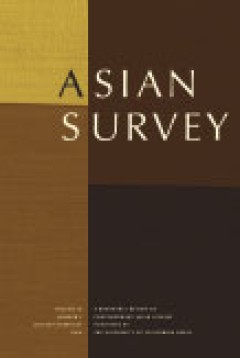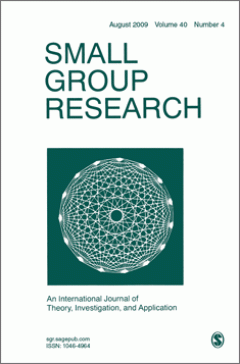Filter by

Food price hikes, food security, and gender equality: assessing the roles and…
The depth and geographical scope of the impacts of the 2007-2008 food price hikes have received wide attention, and calls have been made for urgent actions to minimise the short- and long-term negative effects on vulnerable groups, including women in farming communities. This article, based on research from farming households in Bangladesh and Ethiopia, confirms that it is gender inequality tha…
- Edition
- Volume 18, Issue 3 November 2010 , pages 491 - 501
- ISBN/ISSN
- 13552074
- Collation
- -
- Series Title
- Gender & Development
- Call Number
- -

New agribusiness investments mean wholesale sell-out for women farmers
Globalisation impacts on local land markets and land-use; land transaction costs affect food prices; and the combined effect is particularly damaging to women who produce food and who put food on the table for their families. This paper examines three issues: what is attracting investors and market speculators into the farm and land sectors? What is at stake for small farmers - and especially w…
- Edition
- Volume 18, Issue 3 November 2010 , pages 503 - 514
- ISBN/ISSN
- 13552074
- Collation
- -
- Series Title
- Gender & Development
- Call Number
- -

'Fat eggs': gender and fertility as important factors in HIV/AIDS prevention …
This article examines the response in Botswana to the HIV/AIDS epidemic and some overlooked but key cultural factors that inhibit effective policy implementation. Specifically, this article highlights the importance of gender and fertility as they intersect with ideas of food, fat and social aspects of health in Tswana culture. Using ethnographic methods to understand the role that gender and f…
- Edition
- Volume 18, Issue 3 November 2010 , pages 515 - 524
- ISBN/ISSN
- 13552074
- Collation
- -
- Series Title
- Gender & Development
- Call Number
- -

Service Quality: The Key Role of Service Climate and Service Behavior of Boun…
This study simultaneously tests the influence of two resources that boundary employee units can use to improve service quality. The first is the boundary employee units� perceptions of organizational values oriented toward creating a good service climate. The second is the boundary employees� competences oriented to providing the service, that is, their own service behavior during service trans…
- Edition
- Vol. 35, No. 3, June 2010. pp. 276-298
- ISBN/ISSN
- 10596011
- Collation
- -
- Series Title
- Group & Organization Management
- Call Number
- -

Thailand on the Brink
Thailand�s current partisan turmoil is paralleling growing authoritarianism and democratic decay. This article examines contemporary Thai civil-military relations, the state of armed forces unity, and potential outcomes. It argues that amid heightened political uncertainty and diminished democracy, the only surety today is an enhanced role for Thailand�s armed forces.
- Edition
- Vol. 50, No. 5, September/ October 2010.pp. 845-85
- ISBN/ISSN
- 00044687
- Collation
- -
- Series Title
- Asian Survey
- Call Number
- -

The New Religious Policy in China
China�s new religious policy expands the institutional autonomy of religious organization, limits the power of religious affairs bureaus, and provides for administrative appeal, judicial challenge, and sanctioning errant officials. As such, it is an effort of the Chinese government to integrate religious policy with its systemic socioeconomic and political reforms.
- Edition
- vol. 50. No. 5, September/October 2010. pp. 859-88
- ISBN/ISSN
- 00044687
- Collation
- -
- Series Title
- Asian Survey
- Call Number
- -

Factors behind the Historic Defeat of Japan’s Liberal Democratic Party in 2009
This study seeks to identify the factors that caused the historic defeat of Japan�s long-dominant party in the 2009 election. Employing district-level data, I show that a large national swing occurred that the electoral coordination of opposition parties helped bring about victory.
- Edition
- Vol. 50, No. 5, September/ October 2010.pp. 888-90
- ISBN/ISSN
- 00044687
- Collation
- -
- Series Title
- Asian Survey
- Call Number
- -

Nail-Houses, Land Rights, and Frames of Injustice on China’s Protest Landsc…
This article highlights the way in which Chinese protestors resisting home eviction and demolition have begun to develop innovative, media-savvy tactics for winning public sympathy for their causes and farming their as unjust, and considers the political implications of this trend.
- Edition
- Vol. 50, No. 5, September/ October 2010.pp. 908-92
- ISBN/ISSN
- 00044687
- Collation
- -
- Series Title
- Asian Survey
- Call Number
- -

Was 2005 a Critical Election in Taiwan?
This study applies the concept of critical elections to Taiwan�s recent political history. Instead of 2008, it is argued that 2005 deserves the title of a critical election. Political developments in 2005 laid the foundations for the Kuomintang�s return to political dominance.
- Edition
- Vol. 50, No. 5, September/ October 2010.pp. 927-94
- ISBN/ISSN
- 00044687
- Collation
- -
- Series Title
- Asian Survey
- Call Number
- -

The Rise and Fall of Anti-American Sentiment in South Korea
This article examines anti-American sentiment in South Korea by taking a closer look at the ways in which hegemonic ideas of anti-North Korea and pro-U.S. have been deconstructed. It argues that the extent to which South Koreans perceive a North Korean threat exerts a significant influence on Anti-American sentiment in South Korea.
- Edition
- Vol. 50, No. 5, September/ October 2010.pp. 946-96
- ISBN/ISSN
- 00044687
- Collation
- -
- Series Title
- Asian Survey
- Call Number
- -

The Politic of Budgeting in Japan
In the past decade, the Japanese government has revamped its budget institutions twice. This paper examines how these changes have changed the configuration of power among the actors in the budget process. It also explores the implications of these changes for the management of the nations finances.
- Edition
- Vol. 50, No. 5, September/ October 2010.pp. 965-98
- ISBN/ISSN
- 00044687
- Collation
- -
- Series Title
- Asian Survey
- Call Number
- -

Economic Voting in Taiwan
An analysis on the 1996 and 2004 Taiwan presidential elections demonstrated that the voters overall economic experiences under the dominant Kuomintang and level of education mediated the effect of short-term economic conditions on individual vote choice before and after the first power transition.
- Edition
- Vol. 50, No. 5, September/ October 2010.pp. 990-10
- ISBN/ISSN
- 00044687
- Collation
- -
- Series Title
- Asian Survey
- Call Number
- -

Exploring Conflict Management Processes in Jury Deliberations Through Interac…
This study employs interaction analysis to explore micro-level conflict processes and macro-level phasic structures of conflict management in two jury deliberations. Results indicate that the deliberations have fundamentally different conflict management processes. Differences in the tasks posed by the two deliberations and in the norms enacted in them, as well as microinteractional patterns, a…
- Edition
- Vol. 41 no. 4, August 2010. pp. 408-426
- ISBN/ISSN
- 10464964
- Collation
- -
- Series Title
- Small Group Research
- Call Number
- -

Examining Laughter Functionality in Jury Deliberations
Despite a presumption that laughter and a death penalty decision seem incompatible, transcript data of jury deliberations from both the guilt-or-innocence and penalty phases of the State of Ohio v. Mark Ducic trial demonstrate that jurors do laugh. Working from the disparate literature on laughter, we problematized laughter from a group communication perspective and analyzed its functionality i…
- Edition
- Vol. 41 no. 4, August 2010.pp. 386-407
- ISBN/ISSN
- 10464964
- Collation
- -
- Series Title
- Small Group Research
- Call Number
- -

Speaking for the Institution: A Fourth Production Site for Group Members’ I…
Analysis of the transcript of a jury�s deliberations reveals a fourth production site for influence attempts beyond the three identified by Meyers and Brashers. The fourth site involves influence attempts by jurors to uphold the interests of a particular Court and a particular proceeding, and perhaps the interests of the larger judicial system. This gives the Institution a place at the table as…
- Edition
- Vol. 41 no. 4, August 2010.pp. 427-451
- ISBN/ISSN
- 10464964
- Collation
- -
- Series Title
- Small Group Research
- Call Number
- -

Examining Argument in a Naturally Occurring Jury Deliberation
In this article, the authors examine argument in the interactions of members of a naturally occurring jury (State of Ohio v. Mark Ducic). Using the structurational concept of contradictions and a thematic analysis, the authors examine the forms and functions of group argument structures and the role of argument structuring in the jury�s penalty deliberation. Findings are discussed in terms of …
- Edition
- Vol. 41 no. 4, August 2010.pp. 452-473
- ISBN/ISSN
- 10464964
- Collation
- -
- Series Title
- Small Group Research
- Call Number
- -

Counterfactual Thinking in the Jury Room
There may be no more intense group task experience than serving as a decision-making juror on a death penalty case, where a group of strangers is asked to decide whether another person should live or die. Using the deliberation transcripts from the ABC News documentary In the Jury Room, the double homicide trial of State of Ohio v. Mark Ducic was examined to learn more about communication durin…
- Edition
- Vol. 41 no. 4, August 2010.pp. 474-494
- ISBN/ISSN
- 10464964
- Collation
- -
- Series Title
- Small Group Research
- Call Number
- -

Technological Choices in International Environmental Negotiations: An Actor�…
This article applies the main findings of actor�network theory to the outcomes of international environmental negotiations on technological issues. Taking the Convention on Biodiversity (CBD) as a case study, and more precisely its developments on biotechnology and bioprospecting applications, the research identifies three successive stages in the negotiation of technological issues under the b…
- Edition
- Vol. 49 no. 4, December 2010.pp. 570-590
- ISBN/ISSN
- 00076503
- Collation
- -
- Series Title
- Business & Society
- Call Number
- -

NGOs Moving Business: An Analysis of Contrasting Strategies
In this article, we seek to advance understanding of nongovernmental organization (NGO) strategies with regard to influencing corporations. We study two contrasting NGO strategies (symbolic gain and symbolic damage), which simultaneously target the same corporation on the same issue. In so doing, we highlight three previously neglected dimensions of NGO influence strategies: (a) the influence e…
- Edition
- Vol. 49 no. 4, December 2010.pp. 591-618
- ISBN/ISSN
- 00076503
- Collation
- -
- Series Title
- Business Society
- Call Number
- -

MNE-NGO-Host Government Relationships in the Escalation of an FDI Conflict
Increased interaction among multinational enterprises (MNEs), host governments, and nongovernmental organizations (NGOs) has made the implementation of foreign direct investments (FDIs) more complex and potentially more prone to conflict. In this article, by drawing on a longitudinal case study of a conflict concerning a multinational forest industry company�s pulp mill investment in Uruguay, t…
- Edition
- Vol. 49 no. 4, December 2010.pp. 619-651
- ISBN/ISSN
- 00076503
- Collation
- -
- Series Title
- Business & Society
- Call Number
- -
 Computer Science, Information & General Works
Computer Science, Information & General Works  Philosophy & Psychology
Philosophy & Psychology  Religion
Religion  Social Sciences
Social Sciences  Language
Language  Pure Science
Pure Science  Applied Sciences
Applied Sciences  Art & Recreation
Art & Recreation  Literature
Literature  History & Geography
History & Geography